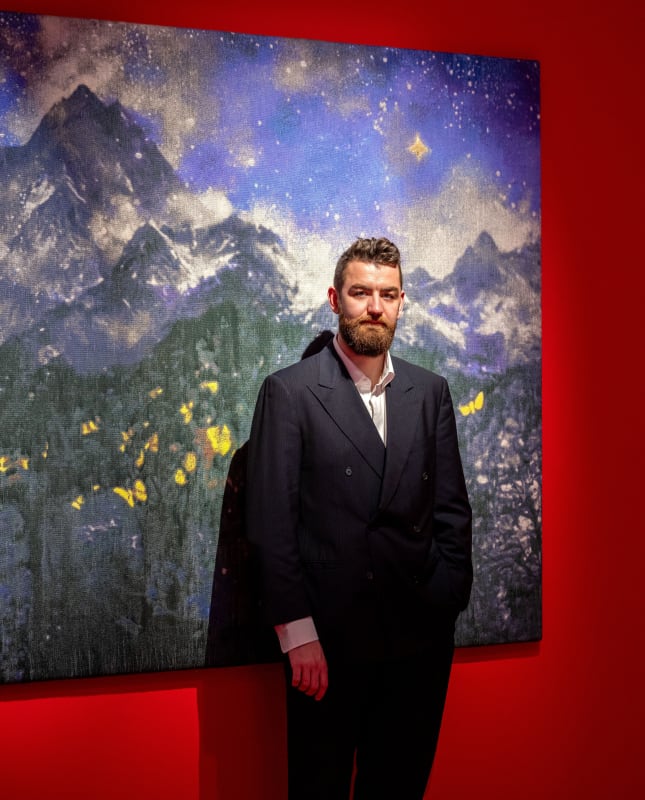Artist and engineer in artificial intelligence, aurèce vettier (a pseudonym generated by an algorithm) uses his personal data (texts, family photos, herbaria, etc.) using freely accessible artificial intelligence models that he assembles and personalizes. A collector of old engravings, he transforms AI shapes into objects, using a variety of artistic crafts. For the exhibition at macLYON, the artist represented by the Darmo gallery presents La Traversée de la forêt. Produced for the event, the work brings together bronze tree sculptures, jewelry butterflies and Aubusson tapestries whose patterns were generated using AI models. "For me, artificial intelligence is not a medium, I see it essentially as a tool of introspection whose generated forms must give rise to the creation of objects and physical experiences," says the artist, who co-signed his last work with Vera Molnár, a few months before the latter's death at the age of 99: variations generated by an AI system around the engraving Melencolia by Albrecht Dürer, AD.VM.AV.IA (2023).
CAN GENERATIVE AI BE REGULATED?
"If we are prevented in Europe from committing the 'original sin' (training an AI model with data for which we have not necessarily paid the rights to make it more powerful), we risk not having models as efficient as in the United States. The data legally available on the internet is not sufficient to create powerful generative AI models. The more diverse the data, the more powerful the models that can be created, because they can handle an infinite number of cases. Among these data, there are inevitably works by artists who do not want to be in the machine, but who we need to understand the diversity of creation. On the other hand, I think it is very important to remunerate artists at their fair value and what I believe in, even if it is imperfect, is a mechanism where the great lords of artificial intelligence pay significant royalties every year to companies like ADAGP or Sacem".
- aurèce vettier, artist and AI engineer
In an open letter published on November 26, 2024 on the HuggingFace website, artists who use AI (aurèce vettier, Jake Elwes, Crosslucid...) have denounced what they describe as "Artwashing". Invited by the American artificial intelligence company OpenAi (known for its ChatGPT conversational agent and its generative AI program capable of creating images from textual descriptions DALL-E) to preview their new "text-to-video" generator Sora, they regret being "public relations puppets" involved in "artistic whitewashing", in which the company OpenAI, valued at more than one hundred and fifty billion dollars, "exploits artists for unpaid research and development and marketing purposes." M.B.


